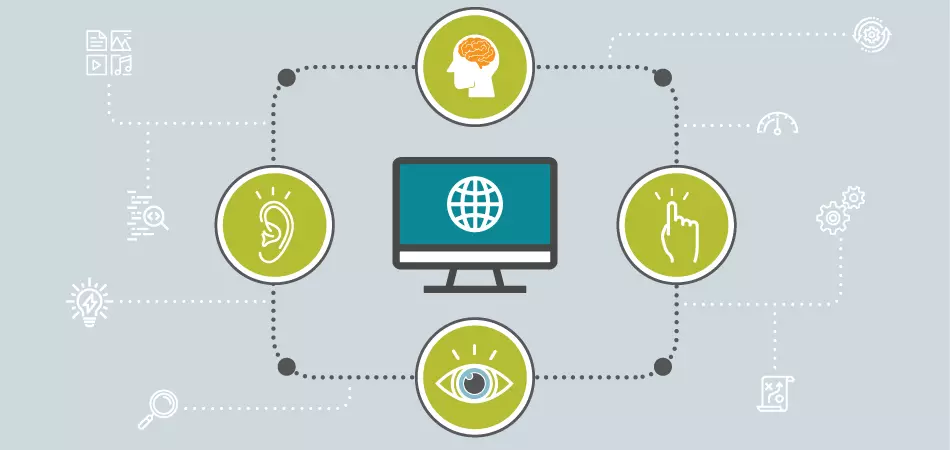An accessible website with a great user experience is the goal.

There are several steps you can take to make sure your website is more accessible to the 1 billion people worldwide that have some sort of disability. When you do the math that is nearly 1 out of every 7 people – or 15% of the world’s population that have a disability who may not be able to engage with your content if it is not accessible.
- Ensure your website is navigable by keyboard only.
- Include transcripts on audio and video.
- Provide good alt text for images.
Creating an accessible digital experience is an intentional process and goes beyond the decisions we make. It starts with inclusive design – the discipline of creating digital experiences that can be shared and enjoyed by all audiences. When you integrate a process that considers users of all different abilities and their resulting needs from the start of a project to the end, you create better, more accessible products for everyone.
Let’s talk about adding audio and video transcripts. Closed captions and transcripts help people who are hard of hearing understand the content of a video. However, they also help a myriad of other people – people using a computer without speakers, in noisy environments, who are not fluent in the video’s language or those who learn better by reading instead of listening.
Everyone benefits from inclusive design.
There is a lot of conversation and collaboration happening right now on this topic. Companies are creating entire teams dedicated to accessibility and inclusivity. Google has an entire blog dedicated to accessibility. Companies like Microsoft and AirBnB are creating toolkits to use as a starting point. There are several free tools for testing the accessibility of different elements of your website such as WebAIM’s color contrast checker. And then there are organizations like the Bureau of Internet Accessibility that provide accessibility testing as a service.
Why? Because providing a great user experience can open up a world of information and opportunities and shouldn’t be limited to select audiences based on ability. When you remove barriers, you open up your website to new audiences and can help drive stronger results through your website.
But beyond that, it’s because designing useful, intuitive experiences that are accessible to as many people as possible is the right thing to do. Making it beautiful is just a step along the journey.
Is your website accessible to all? Find out how inclusive design can enhance your website’s accessibility – contact us and let’s start talking